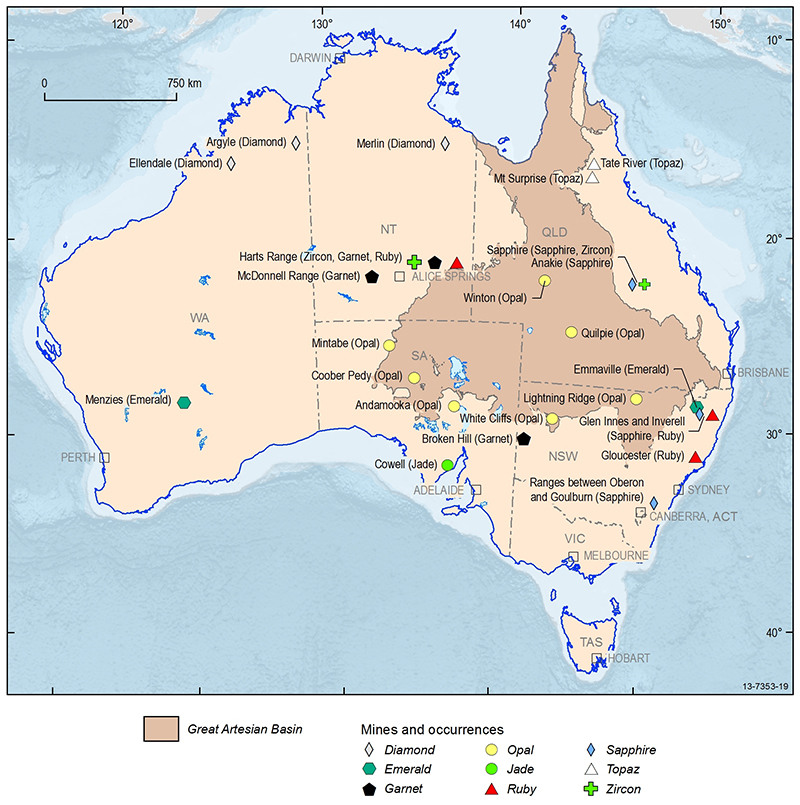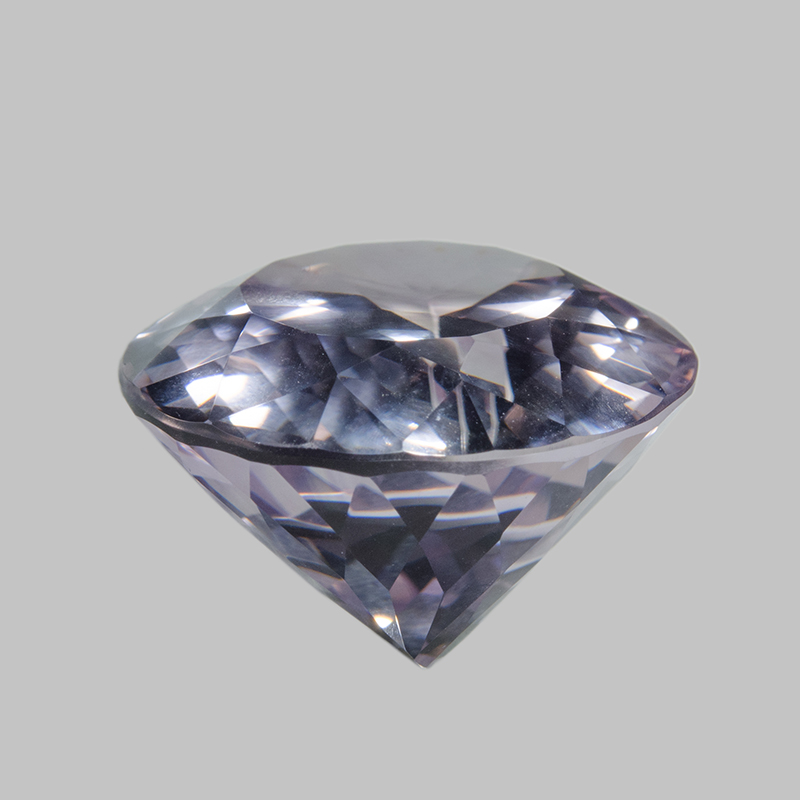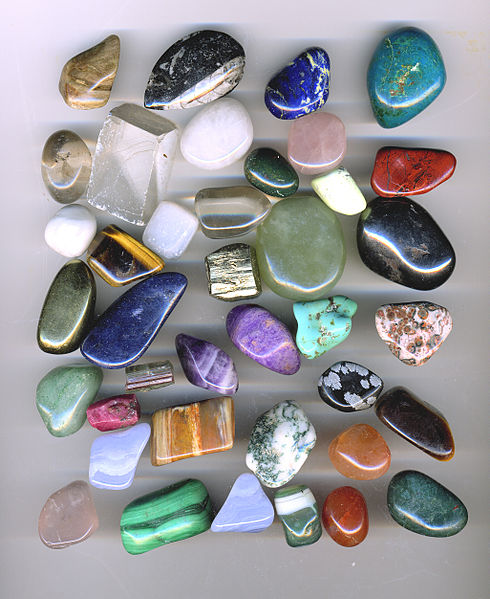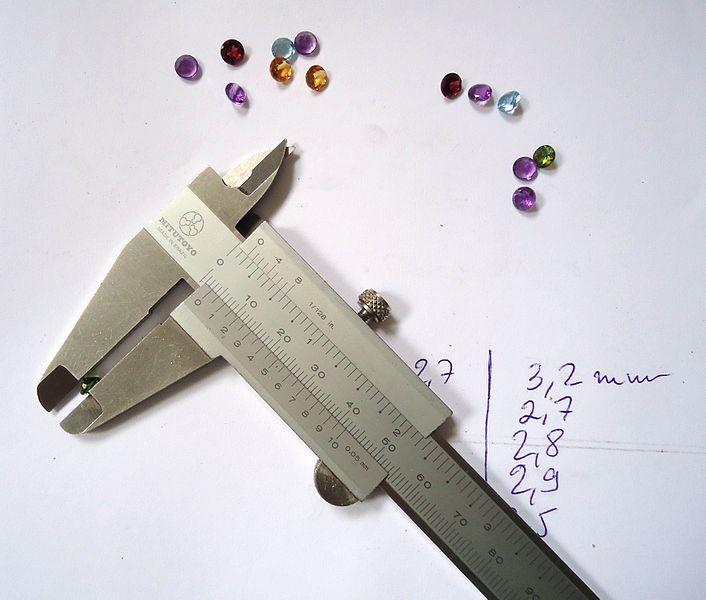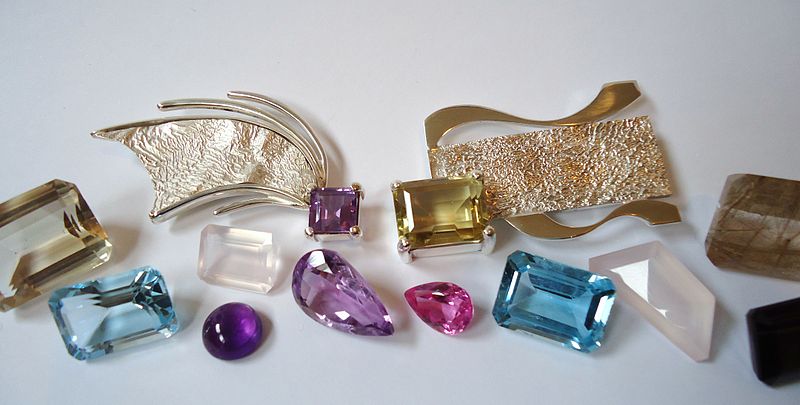Australian gems
Page last updated:13 June 2018
Introduction
Australia, with its long geological history, has some of the world’s oldest rocks and minerals and a wide variety of gemstones. Australia is the world’s biggest producer of diamonds and opals and major supplier of sapphire, ruby, emerald, garnet, topaz and jade has also been mined in Australia. Information on some of Australia's gemstones can be found at Google Arts and Culture - Gems from the Safe.
The test of a good gemstone is its resistance to wear and tear. Using properties of minerals such as habit, shape, lustre, light refraction and specific gravity we can tell the difference between similar looking gemstones. Most gemstones are harder than quartz (Mohs scale greater than 7) and cannot be scratched by the blade of a knife. For example, diamond has a specific gravity of 3.52 and a cubic zirconia, which looks very similar, has a specific gravity of 5.80. This means that cubic zirconium is heavier than diamond. A two carat diamond is larger than a two carat cubic zirconia and very much more expensive.
Precious, semi-precious or ornamental stones
In the mid-1800s, gemstones were first classified as either ’precious’ or ‘semi-precious’. However, these divisions are not scientific and have never been truly meaningful. Diamonds, rubies, sapphires, and emeralds were originally considered the ‘precious stones’, but sometimes this category included opal, jade, or pearls. Gemstones that were referred to as semi-precious are used in jewellery and ornaments. These include:
- agate
- amber
- amethyst
- aquamarine
- aventurine
- chalcedony
- chrysocolla
- chrysoprase
- citrine
- garnet
- hematite
- jade
- jasper
- jet
- kunzite
- lapis lazuli
- malachite
- moonstone
- obsidian
- onyx
- peridot
- rhodonite
- sodalite
- sunstone
- tiger's eye
- tanzanite
- topaz
- turquoise
- tourmaline
Some Australian examples of these gems can be seen at Google Arts and Culture - Gems from the Safe.
Many people in the gem and jewellery industry do not like the terms precious and semi-precious, because they do not take into account the grade of the gemstone. Precious gemstones are not always rarer or more valuable, than semi-precious gemstones. Gemmologists use grade as a general measure of gemstone quality, using the 4Cs (clarity, colour, cut, and carat) to determine the potential price.
The 'beauty' of a gemstone is evaluated by examining how light is transmitted or refracted through the gem or reflected from the gem's surface. A gem can be coloured or have changing colour patterns, differing levels of transparency, lustre and brilliance. In addition, in some gems there is dispersion of light or 'fire'. Some of these properties are qualitative, so can be described rather than measured; and some are quantitative and can be measured using appropriate optical instruments.
Another term sometimes used is ‘ornamental gemstone’. This term is used to describe minerals that lack transparency, but have attractive colours, textures and patterns such as jade, malachite, chalcedony and lapis lazuli. They are not all rare, and most have a hardness of less than 7 on Moh’s scale.
The 4 Cs for gemstones
Gemstones are valued according to four different criteria: clarity, colour, cut and carat (weight or size).
- Clarity is the quality most prized in gemstones. A perfect gemstone is a flawless, transparent crystal that sparkles brilliantly as it reflects light internally. Sometimes crystals contain inclusions which are impurities that distort the appearance of the gemstone. Some gemstones, such as star sapphires, pink diamonds and rutilated quartz are valued even more because of these inclusions. Inclusions can be used to identify if a gemstone is naturally formed or synthetically made. Clarity ranges from internally flawless to imperfect.
- Bright and intense colour will increase the value of a gemstone. Colourless beryl is only moderately valued, but emerald (green beryl) is one of the world’s most valued stones. Jade, turquoise and lapis lazuli have rich green and blue colours making them hugely sought after. Many gemstones acquire their colours due to their chemical composition and trace elements or impurities contained in the stones. Peridot (gemstone olivine) is commonly green due to its chemical composition, but can vary from pale lemon to dark olive green. Colourless diamonds are usually the most highly valued, however, diamonds tinted blue or pink from impurities are sometimes more valuable because they are so rare; many of the diamonds from the Argyle diamond mine in Western Australia are pink or champagne coloured, increasing their value.
- Most gemstones which are used for jewellery have been cut or faceted. If cut incorrectly gemstones will have less sparkle and consequently be poorer quality.
- The term carat refers to the weight of a gemstone. One carat = 200 milligrams (1/5 of a gram).
Formation
Unusual geological conditions are required to create gemstones, which is why they are so rare. Gemstones are often found in igneous rocks. Pegmatite, an intrusive igneous rock, may concentrate rare minerals to form gemstones such as beryl, ruby, sapphire, tourmaline and topaz. Intense metamorphism may create garnet, emerald, jade and lapis lazuli.
Glossary
| Basalt | Dark coloured, fine-grained volcanic igneous rock, low in silica content, composed largely pyroxene, and olivine and feldspar. |
|---|---|
| Birefringence | The splitting of a single ray of light into two rays (also referred to as double refraction). Birefringent gemstones have two different refractive indices; this makes the optical phenomenon very useful for gemstone dealers to correctly identify certain man-made fakes from real gemstones. |
| Carat | The mass of a gemstone. One carat = 200 milligrams (1/5 of a gram). |
| Crystal | A solid mineral enclosed by symmetrically arranged planes. |
| Crystal shape | The shape that a crystallising mineral will take reflects the internal arrangement of its atoms and molecules. |
| Crystal structure | The arrangement of atoms or molecules in a material, creating a lattice exhibiting order and symmetry. |
| Crystalline | Having the structure and form of a crystal. |
| Crystallisation | The process by which crystals are formed. |
| Element | A pure chemical substance consisting of a single type of atom distinguished by its atomic number which is the number of protons in its atomic nucleus. |
| Faceted | When a crystal is cut with flat surfaces, it is said to be faceted. |
| Fluorescence | Emission of vissible light whem a mineral is exposed to radiation such as ultraviolet light or X-rays. |
| Grains | Particles of sediment ranging in size from tiny bits of clay to sand to enormous boulders. Sediments can be transported then deposited by water, wind or ice and this will wear the grains down to smaller sizes. |
| Granite | Common igneous rock usually composed of the minerals quartz, feldspar and biotite mica or hornblende. Granite is made of large crystals that grew slowly as magma cooled deep underground. |
| Lustre | Describes how light is reflected from a mineral's surface (reflectivity). |
| Magma | Molten rock. |
| Metamorphism | The process of one rock changing to another rock because of heat and/or pressure. |
| Mica | A silicate mineral containing iron and magnesium. It forms flat sheets and has a shiny appearance and can be black or colourless. |
| Mineral | A naturally occurring, inorganic, substance with a reasonably fixed chemical composition and crystalline structure. Minerals usually have a crystalline form but not all crystals are made of rock-forming minerals (e.g. sugar). |
| Molecule | Contains a number of atoms held together by bonds and are the smallest complete unit of a substance i.e. an individual molecule of water contains three separate atoms held together by two bonds. |
| Phosphorescence | The emission of visible light for some time after the stimulating radiation causing fluorescence has been turned off. |
| Quartz | A relatively hard mineral made of silica (SiO2) and typically occurring as colourless or white hexagonal prisms. It is often coloured by impurities. |
| Recrystallise | A metamorphic process that occurs under situations of intense temperature and pressure where grains, atoms or molecules of a rock or mineral are packed closer together, creating a new crystal structure. The basic composition remains the same. |
| Refraction | The bending of light as it travels through materials with different densities. |
| Rock | Naturally occurring, solid aggregate of one or more minerals, or mineraloids. For example, the common rock granite is a combination of quartz, feldspar and biotite or amphibole minerals. |
| Sediment | Naturally occurring material that is broken down by processes of weathering and erosion, and is then transported by the action of wind, water, or ice, consisting or rock or mineral particles. |
| Sheen | A special visual effect observed in gems due to reflection of light from the internal structure of the stone. |
| Streak | The colour of powered mineral, often found by scratching the mineral on an unglazed white tile. |
| Volcanic | Igneous rocks that have formed from products of volcanic activity such as lava. |
| Weathering | This is the process in which the texture and composition of rocks, sediments and regolith change after being exposed at or near the Earth's surface to weathering agents such as water, oxygen, organic acids and large temperature fluctuations. Weathering can be chemical or physical (mechanical) and includes changes by the effects of gravity, the atmosphere, the hydrosphere and/or the biosphere at normal temperatures and pressures. |
